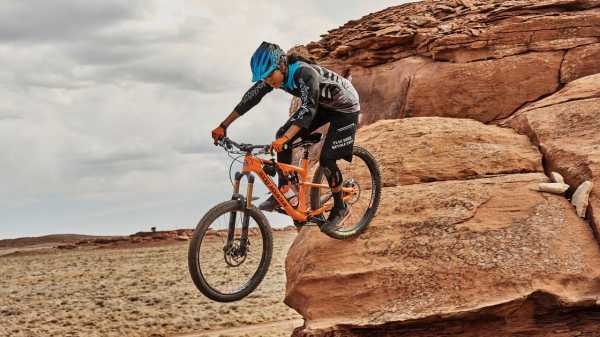

Subscribe »
Photo Booth
The Extreme Cyclists of the Navajo Nation
For some Navajo, cycling offers a way to connect with their landscape and heritage.
Photographs by Cait Oppermann
Text by Philip Gourevitch
Audio by Jamie York
July 28, 2018



Continue with sound?
No
Yes
The summer before, Nigel joined a long bike ride on the reservation called the Tour de Sih Hasin—three hundred miles over seven days, much of it on rough dirt roads and hills, in the punishing July heat. On the second-to-last day, he wanted to quit. His mother said that was O.K. But the next day he pressed on, becoming the youngest rider ever to finish the tour.
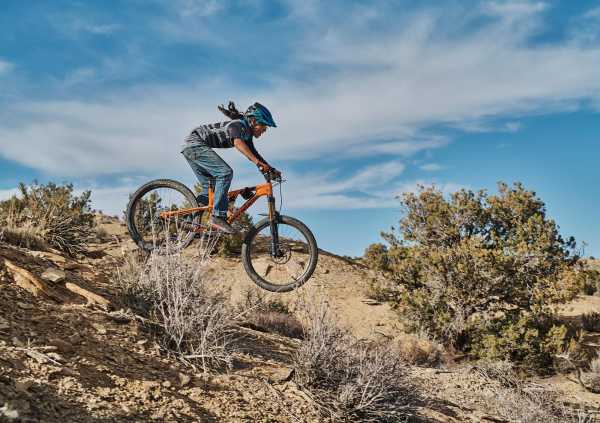
Before Nigel took up cycling, his sport was rodeo, and he rides his bike with the daredevil elegance that calf ropers exhibit on horseback.
Nigel wasn’t the only rider for whom the long days pushing over the severe landscape served as an inspiring test of endurance. Claudia Jackson, who leads the annual ride, organized the Tour de Sih Hasin as a suicide-awareness event. There was only one psychiatrist on the reservation, she told me, and, “In our five communities we had seven suicides in three months.” “Sih Hasin” means “hope” in Navajo, and several riders have told Jackson that overcoming the arduous physical challenge of the tour made them feel they had a reason to live.
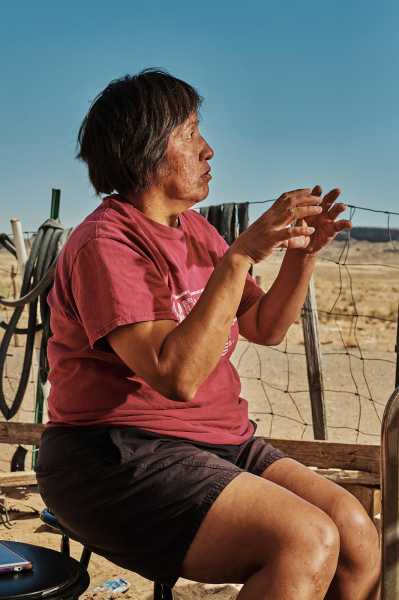
“If we did a bike ride, that sort of brings us together. We talk about things, we might not talk about that issue, but we get people to talk.”
Claudia Jackson
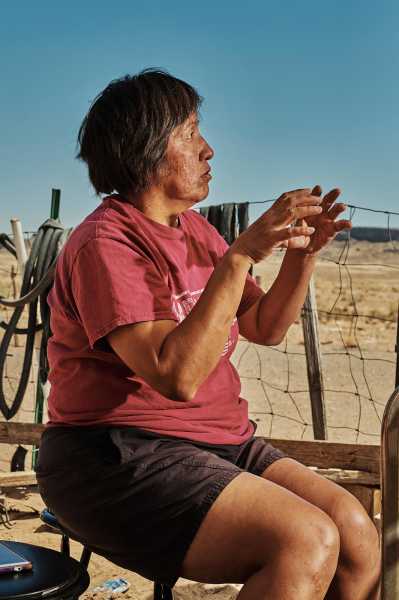
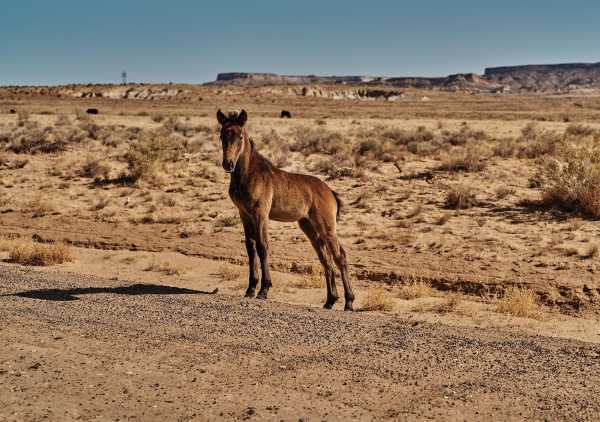
On the Rez, people live far-flung, in isolation, with limited opportunities, and many succumb to alcoholism and drug abuse.
Canyon de Chelly cuts through the heart of the Rez—spectacular to behold and heavy with history. The Navajo made their last stand against the U.S. Army there, in 1864, before they were driven out on a three-hundred-mile forced march known as the Long Walk. Many died along the way and on the return trek, after Navajo leaders signed the treaty that established the reservation. Even so, “This is not our land,” Vincent Salabye, another cyclist on the Rez, said. The treaty only gave the Navajo the right to live on the surface, while Washington kept the soil and the riches that lay beneath. And, for more than a century, reservation children, including Salabye, were taken from their families and sent to boarding schools to be Anglicized, Christianized, and otherwise deracinated—perhaps above all by being forbidden to speak their language. This was the original trauma of the modern Navajo experience, and a century and a half later it haunts collective memory on the Rez, where existence is defined as much by the stark and stony magnificence of the landscape as by the struggle to overcome the contradictions of being both a sovereign and a subjugated people.

Nigel likes to be airborne, and has built ramps to practice jumps all around his parents’ house.
“The purpose of our prayer is to remind us of all that is around us.”
Vincent Salabye
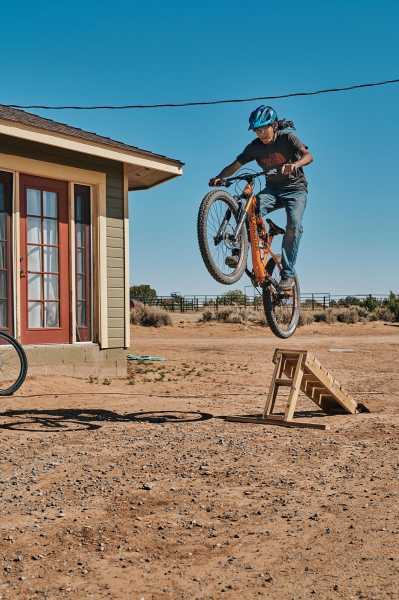
Nigel likes to be airborne, and has built ramps to practice jumps all around his parents’ house.
As a teen-ager, Salabye yearned for escape, so he joined a bunch of kids on a bike trip to Texas and back—three thousand miles at a clip of nearly a hundred miles a day. Riding a bike that hard hurts, but Salabye said he’d never felt better. As he approached middle age, he bought a mountain bike and came out to ride on the rim of Canyon de Chelly, pedalling hard from rock to rock, spinning through sand and gravel traps, and leaping over deep crevices—flying. Last year, Salabye came across Nigel on a trail ride and invited the kid to train with him. Before long, Nigel began taking home prizes at enduro races. “I see myself a lot in him because at that age I wish I had somebody to lead the way,” Salabye said.
Nigel, riding on one of the enduro training trails he built on the Black Mesa, where his family lives.
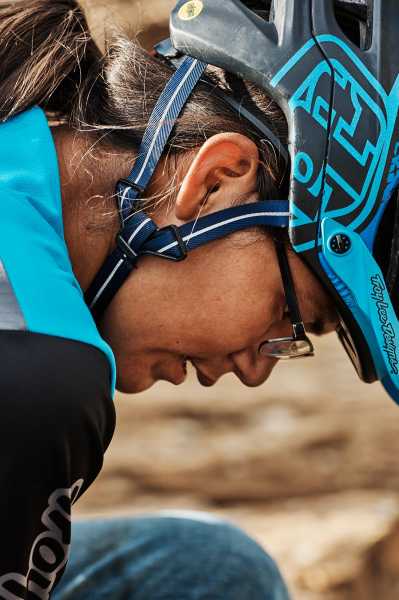
“We’re able to build a lot of things ’cause there’s so much land here. But we also don’t wanna do too much ’cause we could be causing erosion, ruining the land.”
Nigel James
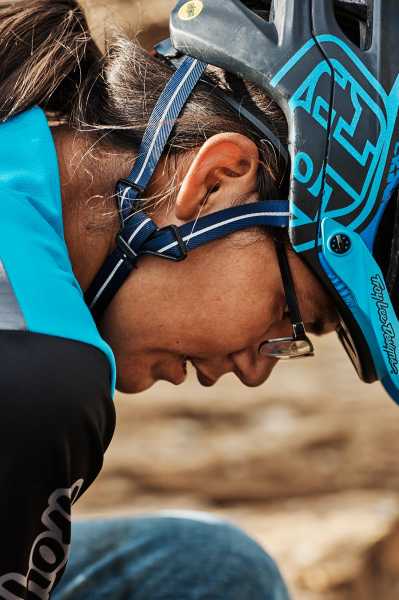
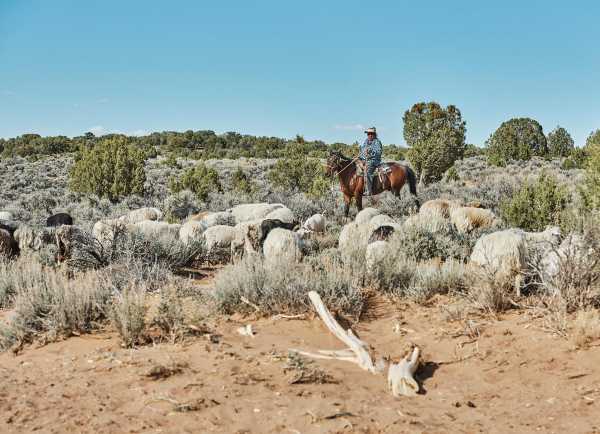
Nigel’s grandfather herding sheep on the family homestead.
Nigel’s grandmother herding sheep on the family homestead.
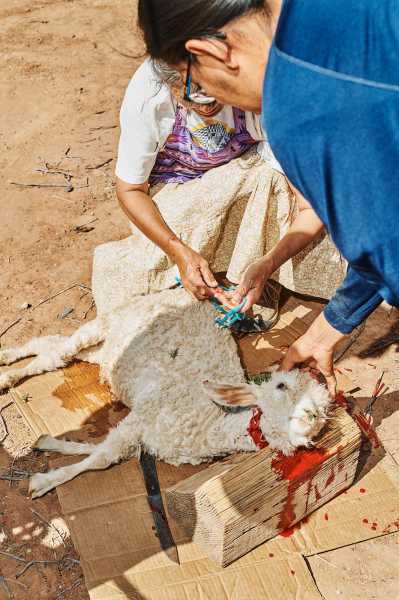
Nigel’s grandmother and cousin slaughter a kid goat for dinner. Like a lot of families on the Rez, Nigel’s lives without running water, and they only got an electric line a few years ago.
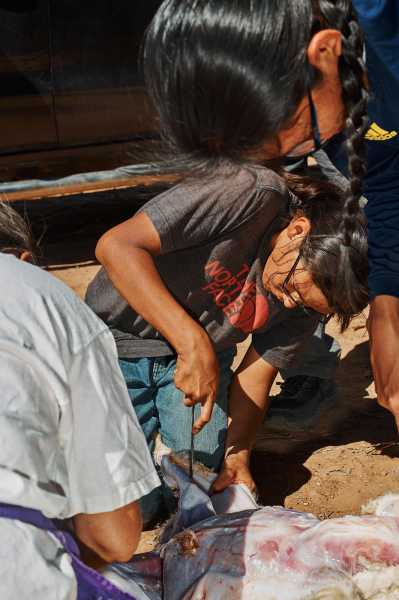
Working right by his grandmother’s side, Nigel skins the goat. His parents spoke of their self-sufficiency as a choice more than a burden.
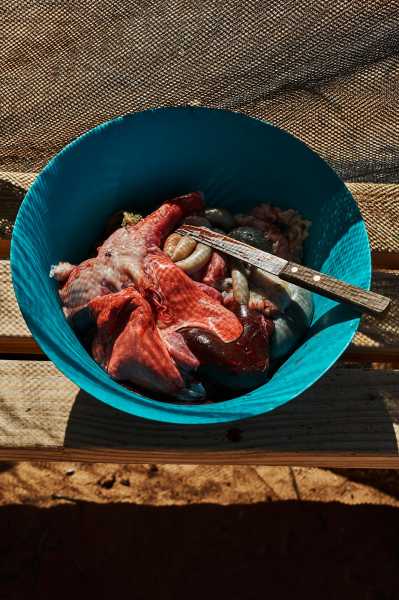
“According to our story of creation,” Nigel’s uncle says, “some higher being taught us how to utilize these foods and taught us how to use the right combination of what not to eat and what to eat.”
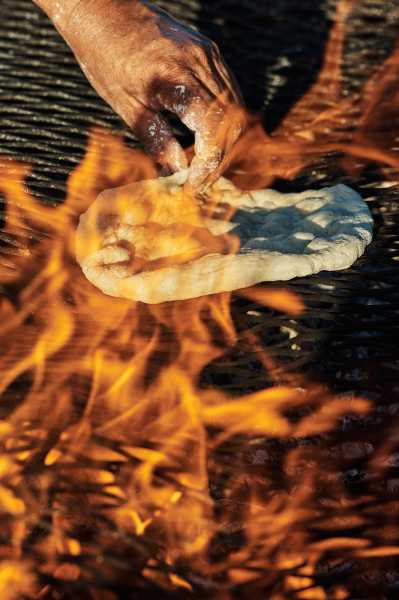
Bread prepared on a grill. There were four generations of Nigel’s family on hand for dinner.
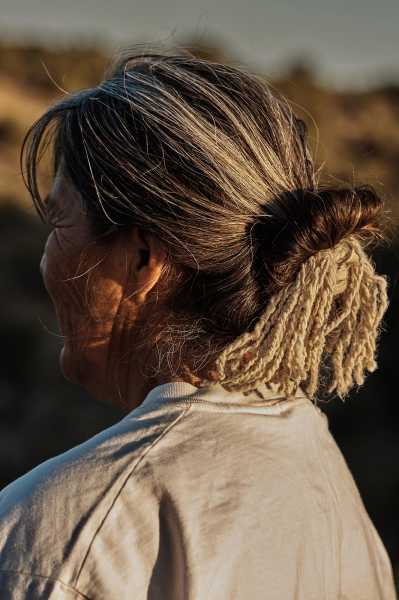
Nigel’s great aunt, wearing yarn made from the wool of her sheep in a traditional Navajo style.
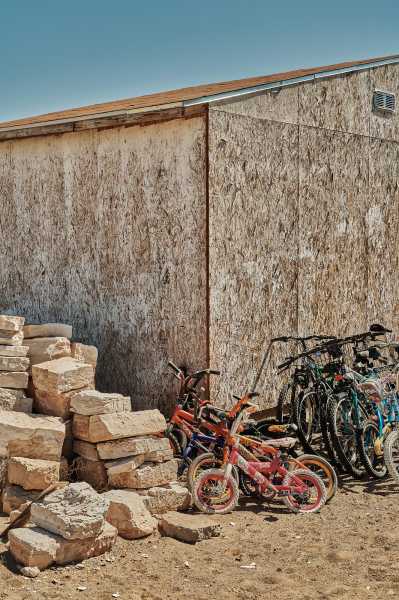
Donated bikes are fixed up to be given to Navajo kids who want to ride on the Rez.
“Our ancestors, they roamed this place, so we don’t want to go any other place but here. And our kids, grandkids… some live out in towns and cities, but for us old folks we don’t want to be out there. I don’t. I like to roam.”
Nigel’s great aunt
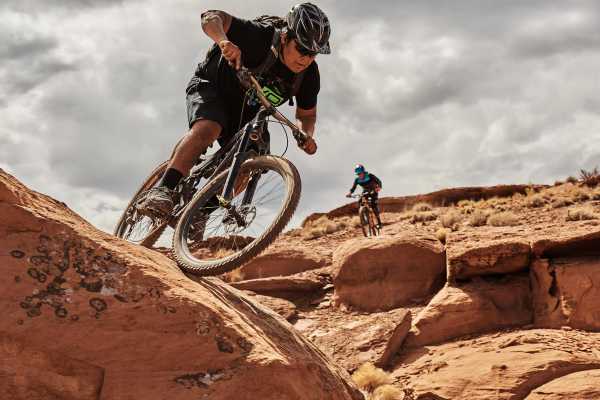
Terence Yazzie. The Yazzies live in Leupp, near the southern edge of the Rez, in a rocky hollow behind red-rock outcroppings.
Jerrod and Terence Yazzie—the Rezneck Riders, as they call themselves—had been riding for more than twenty years, but they hadn’t heard of enduro when they started doing it. After his father died, Jerrod said, he quit school, drank hard, rode rodeo bulls, picked fights, and wrecked trucks. He served time in prison and sobered up, but he came out still angry, and went looking for his fix on his bike, charging straight at the red-rock heaps that had loomed over him his whole life, lurching up and over them and hurling himself off them. Nigel called the Yazzies crazy. He loved riding with them: “Big drops. Big jumps.”
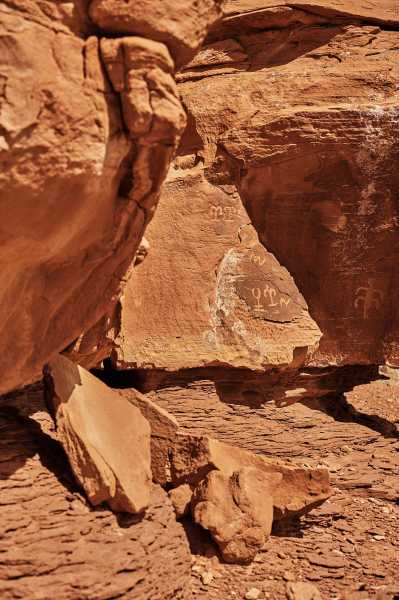
Petroglyphs, etched into a rock formation around the Yazzies’ home.
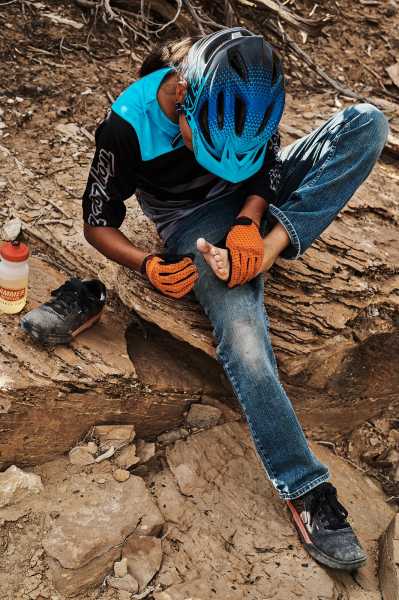
Enduro calls for a different kind of grit than long-distance pedalling.
“I want to see more kids, but they’re too lazy,” Jerrod said. “They’re trying to act white.” He wasn’t just talking about riding the Rez, he was talking about being true to oneself and where one came from as a Navajo. To him they were one and the same. “Remember your fucking language and speak it. Don’t be shy of that,” he said. Otherwise, he warned, “We’re not going to be Navajos here in the near future. It’s just going to be a color of skin, that’s it.” Jerrod sounded stern, but when he and Nigel were back on their bikes on the rocks, launching themselves airborne, ponytails flying, their faces were lit with wild joy.
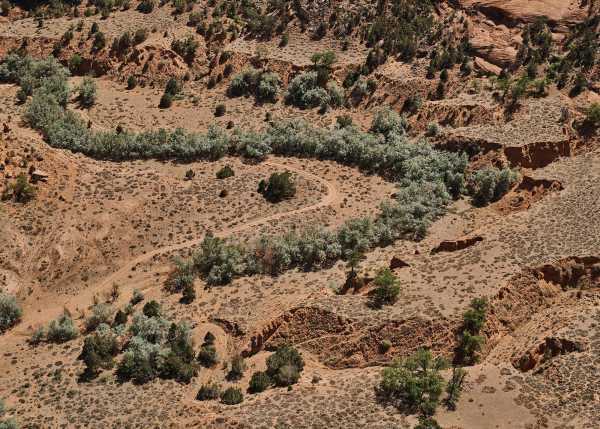
Canyon de Chelly, as seen from the rim of the tableland, where Salabye rides.
“Holding on to our tradition,” Salabye said, means “there’s always a clash.” And that’s how he understood the bike: “My representation of that is, you know, it’s my horse … That’s my horse that takes me places.”
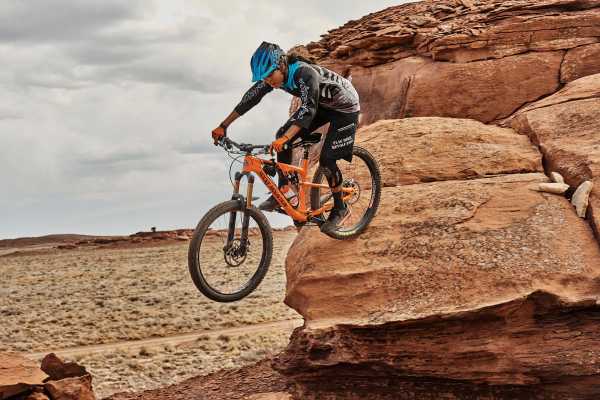
Nigel, training on the Yazzies’ land. “Their place is crazy,” Nigel said. “They just have, like, big boulders everywhere, and then they have like woodwork connecting them. Technical features. Crazy stuff I don’t even want to try.”
“The Rezneck Riders” on The New Yorker Radio Hour. Listen now »
Sourse: newyorker.com






